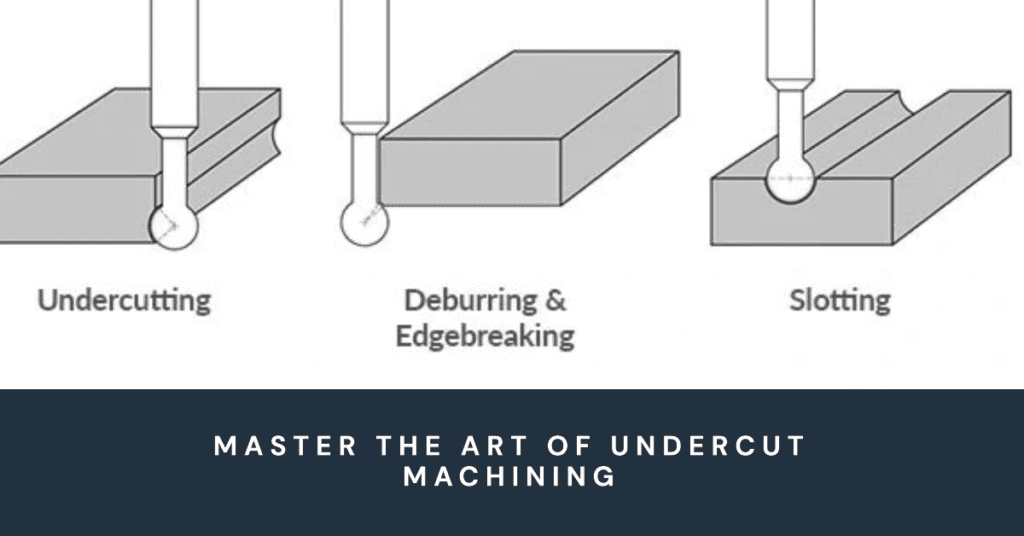
Undercut machining is a critical process in the manufacturing industry. An undercut is a recessed area that is inaccessible using standard end mills or machining methods. This recessed area, often found in molds, dies, or complex mechanical parts, plays a pivotal role in the functionality and assembly of a component. Its geometry is often intricate, making it a challenging feature of the machine. Nevertheless, its importance in ensuring the correct fit and function of assembled parts makes mastering the process of undercut machining essential for any manufacturer.
This article aims to provide a comprehensive overview of undercut machining, from its definition to the tools required, the machining process, different types of undercuts, examples of applications, and finally, some tips for achieving the perfect undercut. So, let’s dive in and explore the fascinating world of undercut machining.
Demystifying the Undercut: A Key Player in Manufacturing
An ‘undercut’ is a term that frequently crops up in manufacturing and engineering circles, yet its significance is often underestimated. So, what exactly is an undercut? Simply put, it is a recessed area in a part that is difficult to machine using standard cutting tools or methods. It is a feature that does not align perpendicular to the surface of the part. This non-standard geometry makes undercuts particularly tricky to create and often necessitates the use of specialized tools and techniques.
Geometry of Undercut
The geometry of an undercut is not standard and involves a surface that is recessed and not easily accessible using conventional tools and methods. The recessed area could take various forms, including a groove, a slot, or a cavity. These recessed areas may be located internally or externally on a part.

Undercut geometry
To clarify, an internal undercut is a recessed area situated on the inside of a part, while an external undercut is located on the outside. Additionally, the surface of an undercut can be flat, tapered, or spherical. Each of these different geometries has unique characteristics and specific applications in manufacturing.
Importance of Undercut in Manufacturing
Undercuts are integral to the manufacturing process for several reasons. Firstly, they enable the assembly of parts by facilitating the interlocking of components. This interlocking is crucial for the proper fit and function of the assembled parts. Secondly, undercuts create channels or pathways for fluids and gases, essential for components such as hydraulic systems or fluid conduits. Finally, undercuts play a role in weight reduction by removing unnecessary material from a component. This is particularly important in industries like aerospace and automotive, where weight reduction is a critical consideration.
For instance, in the aerospace industry, every gram of weight reduction can lead to significant fuel savings over the lifetime of an aircraft. Therefore, undercuts are often employed in the design of aerospace components to remove excess material and reduce weight. However, this must be done carefully to ensure that the component’s structural integrity is not compromised.
The Detail of Undercutting Tools
Creating undercuts in a workpiece requires specialized tools that can reach the recessed areas and remove material with precision. These tools are specially designed to access the areas where standard cutting tools fail to reach, ensuring that the workpiece is accurately machined according to the specifications.
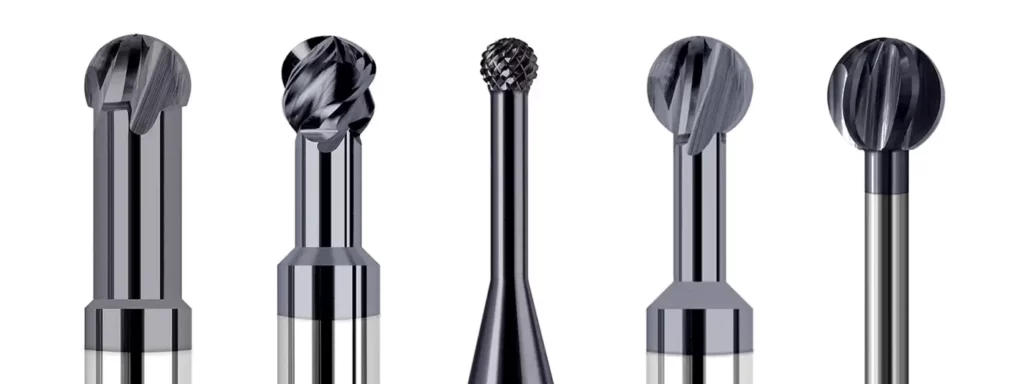
Various undercutting tools
The design of undercutting tools is crucial for their performance. These tools usually have a smaller diameter at the tip, which allows them to reach into recessed areas, and a larger diameter at the base, which helps in removing material efficiently. Additionally, the cutting edge of the tool is designed to remove material from the sides and the bottom of the undercut, ensuring a smooth and precise finish.
There are different types of undercutting tools available, each designed for specific applications:
1. Undercutting End Mills
These are perhaps the most versatile of all the undercutting tools. Designed with a variety of configurations, undercutting end mills can perform a broad range of tasks. The cutting edges are located on the sides and the bottom of the tool, which means they can remove material from both the sides and bottom of the undercut.
The design allows for a single-pass operation, significantly reducing the machining time. The different configurations include straight, tapered, and spherical, each catering to specific needs. For instance, the straight configuration is suitable for general applications, while the tapered and spherical configurations are ideal for specialized applications that require a tapered or spherical bottom, respectively.
2. Lollipop Cutters
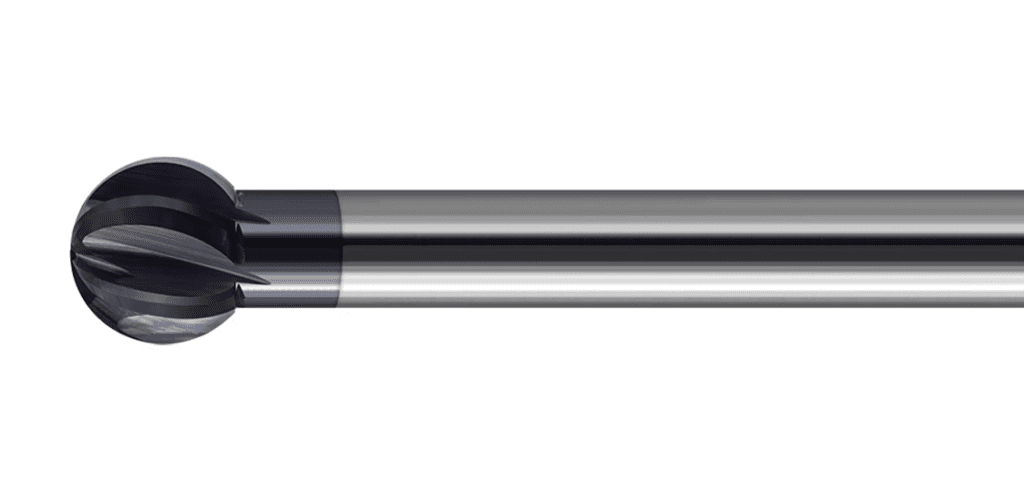
Lollipop cutter
These are a subset of undercutting end mills but are specialized for creating undercuts with spherical bottoms. The cutting edge is spherical, which allows for a smooth and precise finish on the workpiece. This design is particularly useful for applications that require a high level of surface finish, as the spherical cutting edge reduces the risk of tool marks on the finished surface.
3. T-slot Cutters
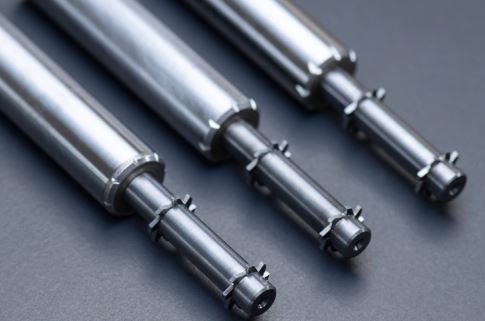
T-slot cutters
As the name suggests, these tools are designed specifically for machining T-slots. A T-slot is a particular type of undercut with a flat bottom and sides that form a ‘T’ shape. The design of the T-slot cutter includes a straight cutting edge that can machine both the bottom and sides of the T-slot in a single pass. This design ensures a precise and accurate T-slot, which is crucial for applications that require a tight fit between the mating parts.
4. Keyway Cutters

Keyway cutters
Keyway cutters are specialized tools designed for machining keyways, which are undercuts with parallel sides and a flat bottom. The straight cutting edges of the keyway cutter can machine both the bottom and sides of the keyway in a single pass, ensuring a precise and accurate keyway. This precision is vital as the keyways are often used for alignment purposes, and any deviation from the specified dimensions can lead to assembly issues.
5. Dovetail Cutters

Carbide dovetail cutter
Dovetail cutters are designed to machine dovetails, which are undercuts with angled sides and a flat bottom. The cutting edges of the dovetail cutter are angled to match the angle of the dovetail sides. This design ensures that the bottom and sides of the dovetail are machined in a single pass, resulting in a precise and accurate dovetail. Dovetail joints are often used in applications that require a strong mechanical connection between the mating parts, so the accuracy of the dovetail is crucial for the overall performance of the assembly.
Undercut Machining Process

CNC Undercutting
Undercut machining involves creating a recess in a workpiece, which is typically inaccessible with a standard end mill or drill. The process requires specialized tools and techniques to ensure the workpiece’s accurate and efficient machining. Below are the key steps involved in the undercut machining process:
- Selection of the Appropriate Tool: The first step in the undercut machining process is selecting the right tool for the job. As discussed earlier, there are several types of undercutting tools available, each designed for a specific application. The choice of the tool depends on various factors, including the type of undercut, the material of the workpiece, and the required surface finish. It is essential to select the right tool to ensure the quality of the finished workpiece and the efficiency of the machining process.
- Setting Up the Machine: Once the appropriate tool is selected, the next step is to set up the machining center. This involves mounting the workpiece securely on the machine table and aligning it accurately with the machine’s axes. It is crucial to ensure that the workpiece is securely fixed to prevent any movement during the machining process. Also, the alignment of the workpiece with the machine’s axes is critical for the accuracy of the finished undercut.
- Programming the Machine: After setting up the machine, the next step is to program the machining center. This involves defining the toolpath, which is the path that the tool will follow during the machining process. The toolpath is usually created using computer-aided manufacturing (CAM) software, which allows for precise control of the tool’s movement. It is essential to program the toolpath accurately to ensure the quality of the finished undercut.
- Machining the Undercut: Once the machine is set up and programmed, the next step is to start the machining process. The machine will follow the programmed toolpath and create the undercut in the workpiece. It is essential to monitor the machining process closely to ensure that there are no issues, such as tool deflection or chatter, which can affect the quality of the finished undercut.
- Inspecting the Finished Undercut: After the machining process is complete, the next step is to inspect the finished undercut. This involves measuring the dimensions of the undercut to ensure that they are within the specified tolerances. Any deviations from the specified dimensions can lead to assembly issues or affect the performance of the finished product.
- Post-Processing: The final step in the undercut machining process is post-processing. This involves any additional operations required to finish the workpiece, such as deburring, polishing, or coating. It is essential to remove any burrs or sharp edges created during the machining process to ensure the safety and performance of the finished product.
Undercuts are a crucial aspect of many manufactured parts. They are recesses or grooves that are cut into a workpiece and are typically inaccessible or hard to reach with standard tools. Undercuts are often necessary for the assembly of parts or to create complex shapes. There are various types of undercuts, each with its characteristics, applications, and requirements for machining. Below are some of the most common types of undercuts:
1. T-slot Undercut A T-slot undercut is a specific type of undercut that is used to create a T-shaped slot in a workpiece. This type of slot is commonly used in mechanical engineering applications to fix parts together using a T-shaped bolt or fixture. The T-slot undercut consists of a straight slot with a perpendicular undercut that forms the ‘T’ shape.
This undercut allows the head of a bolt or fixture to be inserted into the slot and then slid along its length. To machine a T-slot undercut, a two-step process is typically used. First, a slot is cut into the workpiece using a standard end mill. Next, a specialized T-slot cutter is used to create the undercut. This cutter has a T-shaped cutting edge that matches the profile of the required slot.
2. One-sided Undercut A one-sided undercut is a type of undercut that is cut into only one side of a workpiece. This type of undercut is often used in parts that require a lip or a groove on one side of a part, for example, to accommodate a seal or a retaining ring. One-sided undercuts can also be used to create a ledge or a step in a part, which can be used as a reference surface during assembly.
To machine a one-sided undercut, a specialized tool with a cutting edge on one side is required. This tool is typically mounted on a CNC machine or a milling machine and is moved along the workpiece to create the undercut. The depth and width of the undercut can be adjusted by varying the position and movement of the tool.
3. Dovetail Undercut
A dovetail undercut is a type of joint that is used to connect two parts securely. It consists of two parts, one with a protruding wedge-shaped section, and the other with a corresponding recess. The parts are slid together, and the wedge-shaped section locks into the recess, preventing the parts from coming apart. Dovetail undercuts are often used in furniture and cabinetry to create strong, durable joints. To machine a dovetail undercut, a specialized dovetail cutter is required.
4. Tapered Undercut
A tapered undercut has a sloping surface that tapers from one side to the other. This type of undercut is often used in parts that need to be assembled with a press fit, where one part is pressed into another, and the taper helps to guide the parts into the correct position. Tapered undercuts can also be used to create decorative features on a part. To machine a tapered undercut, a specialized tool with a tapered cutting edge is required.
5. Threaded Undercut
A threaded undercut has a threaded surface, similar to the threads on a bolt or a screw. This type of undercut is used in parts that need to be screwed together or onto another object. The threads in the undercut provide the necessary grip for the screw or bolt to hold the parts securely. To machine a threaded undercut, a specialized threading tool or a thread mill is required.
6. Spherical Undercut
A spherical undercut has a curved surface, similar to the surface of a sphere. This type of undercut is often used in parts that require a rotating motion, such as a ball joint or a bearing. The spherical surface allows for smooth rotation and reduces friction between the parts. To machine a spherical undercut, a specialized ball-nose end mill is required.
7. Keyway Undercut
A keyway undercut is a slot or a groove cut into a shaft or a hole that is designed to accommodate a key. The key is a piece of metal that is inserted into the keyway to lock two parts together and prevent them from rotating relative to each other. Keyway undercuts are often used in mechanical assemblies to transmit torque from a shaft to a gear or a pulley. To machine a keyway undercut, a specialized keyway cutter or a broach is required.
8. Relief Undercut
A relief undercut is a small groove or recess cut into a part to reduce stress concentrations or to provide clearance for another part. For example, a relief undercut might be cut into a shaft at the point where it connects to a bearing to reduce the stress on the bearing. Relief undercuts can also be used to provide clearance for a tool or a fastener. To machine a relief undercut, a standard end mill or a slotting cutter can be used.
9. O-ring Groove Undercut
An O-ring groove undercut is a type of groove that is cut into a part to accommodate an O-ring. The O-ring is a flexible ring made of rubber or another elastic material that is used to create a seal between two parts. The groove provides a recess for the O-ring to sit in, ensuring a tight seal. To machine an O-ring groove undercut, a specialized O-ring groove cutter is required.
Technical Insight of Different Undercuts
In all cases, it is important to select the correct type of undercut for the application and to use the appropriate tools and techniques to machine it accurately. Additionally, the standard tool angles, cutting widths, and depths mentioned above can vary based on the specific requirements of the application.
Table: Insights of different undercuts
| Undercut Type | Standard Tool Angle | Cutting Width | Depth |
|---|---|---|---|
| Tapered | Varies depending on taper angle | Width of taper at widest point | Height of taper |
| Threaded | Corresponds to thread angle, typically 60 degrees | Determined by thread pitch | Determined by thread depth |
| Spherical | Varies depending on the radius of the sphere | Diameter of the sphere | Radius of the sphere |
| Keyway | Typically 90 degrees | Width of the key | Height of the key |
| Dovetail | Corresponds to the angle of the dovetail, typically 45 or 60 degrees | Width of dovetail at widest point | Height of the dovetail |
| Relief | Typically 90 degrees | Width of the relief required | Height of the relief required |
| O-ring Groove | Typically 90 degrees | Diameter of the O-ring | Cross-section diameter of the O-ring |
| T-slot | Typically 90 degrees | Width of the T-slot at its widest point | Height of the T-slot |
| One-sided | Varies depending on the application | Width of the undercut | Height of the undercut |
Examples of Undercuts in Specific Applications
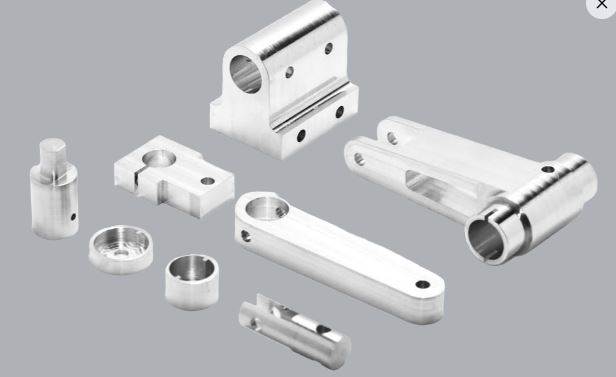
CNC machined parts having undercut features
Undercuts in specific applications are a critical aspect of various manufacturing processes and have a vital role in the proper functioning of many components.
1. Automotive Industry:
In the automotive industry, undercuts are often used in the production of keyways for shafts and gears. These keyways are crucial for transmitting torque and preventing relative rotation between two parts. Additionally, undercuts are often found in the production of O-ring grooves in automotive components. O-rings provide a seal between two parts to prevent the escape of fluids or gases. The groove must have a precise depth and width to ensure that the O-ring can compress properly and provide an effective seal.
2. Aerospace Industry:
In the aerospace industry, weight reduction is of the utmost importance. Parts often have complex geometries and need to be as light as possible without compromising strength. Undercuts are used in areas where material can be removed without affecting the structural integrity of the part. For example, undercuts can be found in the grooves of aerospace components where wiring or tubing needs to be secured. These grooves help to organize and protect the wiring or tubing while minimizing the weight of the component.
3. Electronics Industry:
In the electronics industry, undercuts are often used in the production of connectors and housings. Connectors often have dovetail or T-slot undercuts that allow for the secure attachment of other components. Housings, on the other hand, often have relief undercuts to provide clearance for other parts and to facilitate assembly.
Tips for Perfect Undercut Machining
Achieving the perfect undercut can be challenging due to the intricate nature of the feature and the need for specialized tools and methods. Here are some tips that may help:
- Select the Right Tool: Selecting the right tool for the job is crucial for achieving the perfect undercut. The size and shape of the undercut, as well as the material of the workpiece, will determine the type and size of the undercutting tool required.
- Use a CNC Machine: A CNC machine provides the precision and control required to machine intricate and complex geometries such as undercuts. It allows you to program the exact parameters for the machining operation and execute it with high precision and repeatability.
- Secure the Workpiece: Ensuring that the workpiece is securely clamped to the machine table is crucial for achieving the perfect undercut. Any movement of the workpiece during the machining operation can result in inaccuracies and defects.
- Monitor the Machining Process: Carefully monitoring the machining process is essential for achieving the perfect undercut. This involves starting the machine and carefully monitoring the machining process to ensure that the undercut is being machined accurately and efficiently.
Elevate Your Manufacturing with Prolean CNC Machining Services
In a world where precision, efficiency, and reliability are of paramount importance, Prolean CNC Machining Services stands as a beacon of excellence. With a track record of consistently delivering high-quality components, we pride ourselves on our state-of-the-art CNC machines capable of executing intricate undercuts and complex geometries with utmost precision. Whether you are in the automotive, aerospace, electronics, medical, or construction industry, our services are tailored to meet the unique needs of your application.
Prolean CNC Machining Services doesn’t just stop at providing exceptional services; we are committed to being your partner in innovation. Our team of seasoned engineers and machinists work closely with you from design to production, ensuring every aspect of your project is meticulously planned and executed. With us, you get more than just a supplier; you get a partner dedicated to helping you achieve success.
- Expertise in Undercut Machining: With years of experience and specialized tools, we excel at machining undercuts of all types, including T-slot, one-sided, dovetail, and more.
- Advanced CNC Equipment: Our advanced CNC machines ensure precision and efficiency in every component we produce.
- Quality Assurance: Rigorous quality checks at every stage of production ensure that your components meet the highest standards of quality and accuracy.
- Customized Solutions: We offer customized machining solutions tailored to meet the unique needs of your application.
- Technical Support: Our team of experienced engineers is available to provide technical support and advice at every stage of your project.
- On-Time Delivery: We understand the importance of time in today’s fast-paced world, and we are committed to delivering your components on time, every time.
Conclusion
Undercut machining is a critical process in the manufacturing industry that involves creating recessed areas in a component that are inaccessible using standard tools and methods. It plays a pivotal role in the functionality and assembly of a component, facilitating the interlocking of parts, creating channels for liquids and gases, and reducing weight. Specialized tools, such as undercutting end mills, and methods are required to machine these intricate and complex features.
With the right tool, a CNC machine, a secure workpiece, and careful monitoring of the machining process, it is possible to achieve the perfect undercut. Whether you are manufacturing automotive components, aerospace parts, medical devices, or consumer electronics, mastering the art of undercut machining is essential for producing high-quality and functional components.
FAQs
What is an undercut?
An undercut is a recessed area in a machined part that is inaccessible or hard to reach using standard cutting tools. It is a feature that is not perpendicular to the part’s surface.
What are the different types of undercuts?
There are several different types of undercuts, including internal undercuts, external undercuts, tapered undercuts, and spherical undercuts.
What are the applications of undercuts?
Undercuts are used in a wide variety of applications, including automotive components, aerospace parts, medical devices, and consumer electronics.
What tools are used for undercut machining?
Specialized tools, such as undercutting end mills, are required for undercut machining.
What are the challenges of undercut machining?
Undercut machining can be challenging due to the intricate nature of the feature and the need for specialized tools and methods. It requires high precision and control to achieve the perfect undercut.
What are some tips for achieving the perfect undercut?
Some tips for achieving the perfect undercut include selecting the right tool for the job, using a CNC machine, securing the workpiece, and carefully monitoring the machining process.




0 Comments